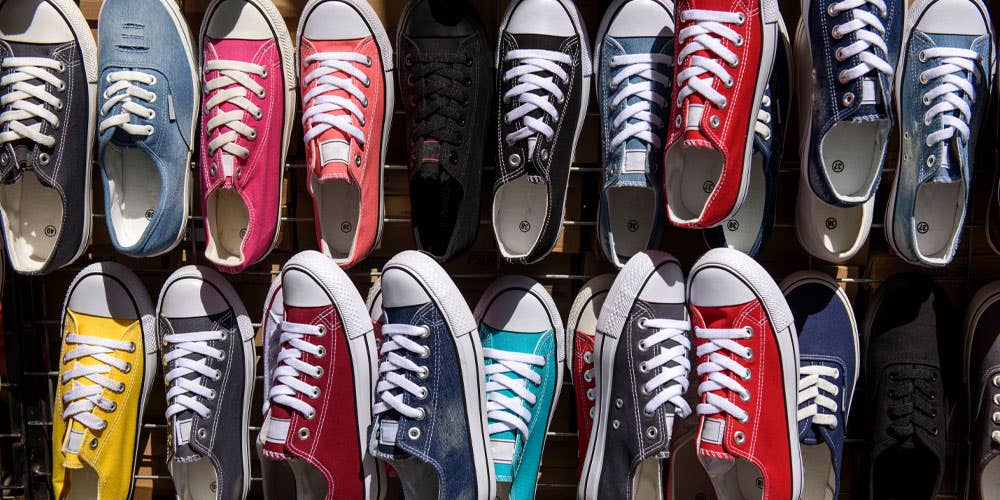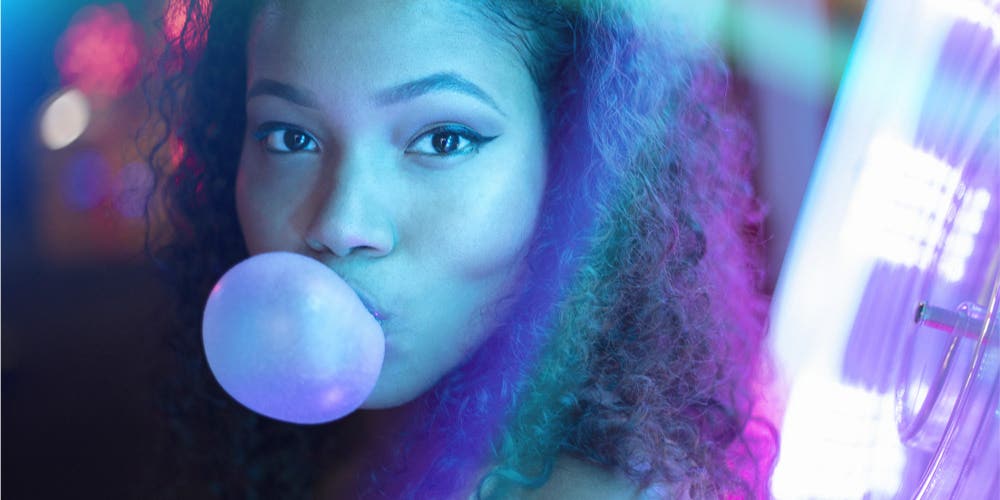Sembang dengan AVA - Perunding Perniagaan AI anda
Hai, saya Ava, panduan AI anda untuk meningkatkan perniagaan anda!
Sama ada anda sudah menjalankan perniagaan atau ingin memulakan perniagaan, saya di sini untuk membantu menjadikan visi anda menjadi realiti menggunakan pekerja bebas yang dikuasakan AI. Kongsi matlamat perniagaan anda dan bersama-sama, kami akan mencipta projek yang boleh dibida oleh pekerja bebas berbakat kami. Mari jadikan visi anda satu realiti!
Saya mempunyai perniagaan
Saya memulakan perniagaan
Sesuatu telah berlaku semasa menghantar perbualan ini ke e-mel anda. Sila cuba sebentar lagi.
Anda hanya boleh menyimpan perbualan anda sekali setiap jam. Sila cuba sebentar lagi.
Perbualan anda terlalu pendek. Teruskan bersembang dengan Ava untuk mendayakan penyimpanan.
How to build a brand guide
Your brand is one of your business' most valuable assets. We'll show you what you need to keep in mind when building your branding guidelines.
9 Jul 2020 • 8 minit bacaan
Dikemas kini pada 11 Dis 2020 oleh Scott K.

Veteran Business/Technology/Lifestyle Writer
Salin ke papan keratan gagal, sila cuba lagi selepas melaraskan kebenaran anda.
Disalin ke papan keratan.

The comprehensive guide to developing an amazing brand in 2020
The great brands of the world are memorable. Nike’s name calls to mind a distinctive logo, ruthless optimism, and the sound of dribbling basketballs. McDonald’s, despite serving heavy foods, gives off a positive, melodic feeling with catchy jingles and a radiant color scheme. Most of us know the brands of the world better than we know our extended families, for better or worse.
Meanwhile, the not-great brands of the world are actually fairly hard to remember, because there are vanishingly few successful companies who don’t have good branding. There’s a reason for this. In an increasingly commercially saturated world, where basically any good or service can be obtained from dozens of different sources, it’s not your product that wins the day. It’s an emotional, intellectual, and cultural connection.
In other words, branding is vital. But there’s no need to be intimidated. Although crafting a brand is artistic, it’s also a science. No matter the size of your company, if you approach branding systematically, you can come up with something memorable.
Here’s where you should start.
What’s your story?
A great brand tells a story. So, to begin, you need to ask yourself a question that surprisingly few entrepreneurs ask. What’s your story? What’s the narrative of how your product fits into the lives of its customers? What’s your mission, and who are you?
If you’re not an emotionally-inclined person, these questions might strike you as a little silly. “I’m just selling pens, what kind of story goes into a pen?” Well, lots. Your pen could be the choice writing instrument of an innovative art student who’s going to create boundary-breaking masterworks. Or it could be the efficient, no-nonsense tool of an efficient, high-achieving person. Who’s your ideal customer, and what’s your fantasy of how they relate to your product? What do they value?
Get imaginative. Think about where a movie about your product would be set. Los Angeles in the summer, or Stockholm in the winter? If your brand were a person, would they be suave, gentle, or tough as nails?
Answers to these questions will give you a sense of your company’s essence, and that will radiate throughout all of your branding. Think of Starbucks. Starbucks established itself as a company providing environmentally-conscious, high-quality products with a personal touch, and they’ve maintained this feeling even as they’ve become a gigantic multinational corporation that occasionally sells rainbow beverages intended for the express purpose of racking up Instagram likes.
They did this with an essence : an earthy color scheme, an inviting logo vaguely reminiscent of hippie Goddess worship, and a consistently caring and approachable tone in their copywriting, all pointing towards something warm and authentic.
Before you rush out to hire the most expensive logo designer you can find, you need to lie awake at night obsessing over these questions for a little while.
Building out the fundamentals
Now that you understand the emotion and story at the core of your brand, it’s time to get to the actual branding part. There are three major fundamentals that need to be established before you start digging through typefaces.
Name
Your brand name doesn’t actually have to represent your brand’s story. The truth is that if your name is catchy and descriptive, it’ll probably be fine. Take Grammarly, for example. What does that brand name tell us? It says that the app is concerned with grammar. Not particularly vivid.
However, your brand name can tell a story, and those brands benefit from it. Consider two wealth management companies: Wealthsimple and Robinhood. One aims to be an investment tool for the intelligentsia who want to demystify investment, and the other positions itself as the tool of scrappy investors who want to beat the market. You already know which is which. For another example, if you’d never been to Brooks Brothers or Forever 21, you could probably figure out which would be likelier to stock clothing you’re interested in, going on the name alone.
The best way to come up with one great name is to come up with 100. 99 will be bad—1 will probably be good. And feel free to go a little crazy. Did you know that Häagen-Dazs isn't actually a Dutch name? Some American guy just thought a vaguely Dutch-sounding name would lend a sense of quality and tradition to his ice cream brand. And he was right.
Logo
2020 is a complicated time, from a branding and design perspective. It seems like you can just do whatever. Everything is in fashion. Minimalism is acceptable, complicated script fonts are also acceptable.
So, if you don’t have a sense of what you want your logo to look like, it can be difficult to know where to start. And it’s not generally a good idea to hire a professional logo designer and tell them to do, “I don’t know, whatever.” You’ll probably get something good-looking, but it probably won’t be in line with your vision.
A good place to start, if you want to cut through the confusion, is to look at your competitors, and compile your opinions. In the furniture business? Cool! How do you feel about that Ikea blue and yellow, and their solid, sans-serif font choices? What do you think about Wayfair ’s fondness for purple, and their more splashy, playful design choices?
In looking at your competitors, you might have a “Eureka” moment. Or you might just come up with a long list of opinions about what you do and don’t think you want. Both are useful. If you have notes to give to a designer, they’ll be able to make informed decisions. And if you have a logo design concept in mind, your designer will probably be able to make it better.
Brand voice
This might sound like an odd entry into the list of fundamentals. However, for better or worse, we live in the era of social networking, where brands have to constantly engage in verbal communication through massively consumed public channels. You’re going to want to figure out how your brand will sound in its Tweets, Instagram posts, Facebook ads, other messaging.
We’re not talking about something terrifically difficult—it’s just a matter of figuring out what kind of personality your customers would prefer to interact with, and making sure that personality is maintained over different lines of communication. Virgin, for example, maintains its playful image by Tweeting about beer . If your business were an airline, would it Tweet about beer?
Build your brand's design system
Once you have the basics figured out, it’s time to extend these things into a design system. A design system is, essentially, a manual for how your brand should look when it goes out in public. Someone who’s never seen your brand before should be able to look at your design system, in the form of a Brand Bible, and produce perfect examples of your visual messaging.
Design systems can get tremendously complicated. Large brands will be specific about exactly how much white space needs to be put around their logo, to the pixel. If you’re reading this, you’re probably not there yet. But there are a few necessities.
Color use
Some of your color scheme will be directly implied by your logo. However, it’s up to you to figure out how that color scheme could be implemented across your company’s communication. If your company’s logo incorporates a bold lipstick red, will that be an accent color that’s used on every sub-header and underline, or will it just be used on the logo and an occasional graphic element here and there?
Type hierarchy
No company can live on one typeface alone. You’ll need at least two typefaces, and perhaps more. They should differ but also complement each other in a way that reflects your company’s mission. For example, wildly successful beauty brand Glossier uses an italicized serif font and a crisp sans serif, and together, they evoke a sort of new-school, high-budget femininity.
Photo treatment
Given the importance of Facebook and Instagram, it’s vital to have a sense of how your brand’s images will look, in general, whether that means contemplating what kinds of models you use, or just settling on an Instagram filter of choice. Check out two brands that do Instagram well, Allbirds and Onnit . Allbirds’ photos look colorful and creative but in a very intentional, put-together way. There are splashes of warm color, but they’re never chaotic or overwhelming, and the photos are carefully cropped and composed. Onnit, meanwhile, looks totally different—its straightforward imagery and dark colors evoke after-workout photos taken by sweaty gym enthusiasts, and it’s purposefully unfussy and uncomplicated.’
Iconography
You know, the little buttons on stuff. The “mail” button that people click on to send you an email, or the question mark that brings them to the help screen. At some point, you’re going to need custom icons. This is something you probably can’t do yourself—there’s a finicky art to making iconography look coherent to your brand and yet simplistic enough to be intuitive.
Identify brand extension opportunities
Okay, so you have a great brand. What do you do with it? There’s way more than just Facebook ads, your landing page, and Instagram posts. And, unfortunately, as the world becomes more interconnected, the general standard of branding goes up. Having an attractive logo, a coherent visual style, and a consistent message won’t necessarily be enough.
However, if you take a look at your product’s lifecycle, you’ll probably find dozens of opportunities to use your branding to enshrine your company in the minds of your customers.
Take food box service Daily Harvest . The premise of Daily Harvest is that customers will get a wide variety of different nutritious foods. That’s why, in some of their boxes, customers get a little bingo card, allowing them to record the different kinds of plants they’ve consumed. That bingo card was probably slightly costly to produce, but it was a strong evocation of what the brand gives its customers—a varied, healthy diet in a box for those who are too busy to go out and buy it.
Chipotle positions itself as the “thinking person’s burrito,” the brand for those who care about quality ingredients and environmental friendliness. They take great pains to promote this image at every step. One recent example is their Cultivating Thought bag campaign , in which they tapped famous authors and intellectuals to write little stories that went on their packaging. While you might not be able to hire famous authors, think—how could I revamp something completely mundane, like my packaging, and make it into another vector for my company’s image?
Little touches like these can really make your brand stand out. There are a thousand health-conscious fast-casual places, but only one with essays by Nobel laureates. There are a thousand food box delivery services, but only one with papaya bingo cards. There are a thousand [insert your company’s area here] companies, but only one that does [the cool thing you’re about to do.]
Keep it consistent
In the end, though, no matter how creative you get with it, consistency is what will make your brand stick in the long term. We’re all fairly simple creatures, and we can all be programmed. We see the letters “C-O-K-E” and a particular shade of red, and we start putting the two together.
So, when you’re establishing your brand, be scrupulously consistent as much as you can across every single medium. Written company communication? Make sure your letterhead is consistent with your design bible. Support email? Make sure it’s written in the same friendly tone that’s used on your Twitter.
This might feel silly and tiresome at first. But, eventually, if you maintain your branding efforts, customers will do more than just use your products—they’ll feel like they know your products. And this will make them buy more of your products.
Final words
All of this requires expertise. That's why you shouldn't take on the task of brand development by yourself. It's important to look for graphic designers , copywriters and marketing experts who can help you build a consistent brand that customers remember, and that keeps them coming back to buy from you.
Beritahu kami apa yang anda perlukan
Masukkan nama projek anda
Kisah Berkaitan
Bercakap dengan salah seorang Pembantu Teknikal kami untuk membantu projek anda
Artikel yang Disyorkan Hanya untuk Anda

Your company's brand may be a bit of an afterthought for you, but marketing expert Eric Siu says it's your most important defense
4 min read

Good corporate branding can add massive value to your business. We'll show you how to turn your brand into a valuable asset
7 min read

Room Steals had a problem with its branding. It needed a complete revamp. The company turned to Freelancer.com for help. Read about their success.
2 min read

The secret to a winning website design is a winning brand identity. We show you how to create one
9 min read
Terima kasih! Kami telah menghantar pautan melalui e-mel kepada anda untuk menuntut kredit percuma anda.
Sesuatu telah berlaku semasa menghantar e-mel anda. Sila cuba lagi.
Memuatkan pratonton
Kebenaran diberikan untuk Geolocation.
Sesi log masuk anda telah luput dan telah dilog keluar. Sila log masuk sekali lagi.




